Mark Anthony Neal's Blog, page 843
January 26, 2014
Thomas Allen Harris Discusses New Film 'Through a Lens Darkly' at Sundance
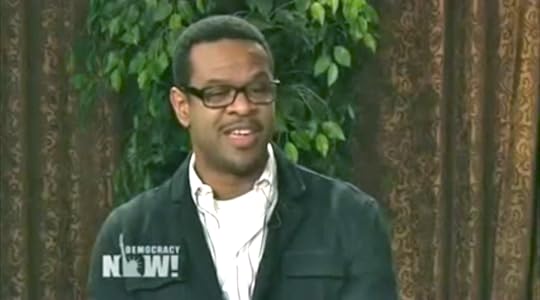 Democracy Now
Democracy NowA new film explores how African American communities have used the medium of photography to shape how they are represented. "Through A Lens Darkly: Black Photographers and the Emergence of a People" is directed and produced by Thomas Allen Harris, who shares his own family's history in the film. Allen Harris is also the creator of the related project, the Digital Diaspora Family Road Show. Both were inspired in part by the book, "Reflections in Black: A History of Black Photographers, 1840 to the Present" by Deborah Willis, who also produced the film. Allen Harris joins us from the Sundance Film Festival in Utah, where his movie is having its premiere.
Published on January 26, 2014 08:56
January 25, 2014
'Invisible Man' - Book Summary & Analysis by Thug Notes
Published on January 25, 2014 08:41
January 23, 2014
5 Ways to Engage Youth in the Fight for Civil Rights by Christopher Emdin
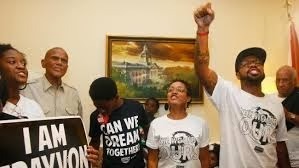 5 Ways to Engage Youth in the Fight for Civil Rightsby Christopher Emdin | HuffPost Impact
5 Ways to Engage Youth in the Fight for Civil Rightsby Christopher Emdin | HuffPost ImpactA few days ago, I placed my cell phone, keys, and wallet in a small plastic bin and slowly walked through a set of large metal detectors. After making my way through the machine, I was asked to raise my hands as an officer scanned me with a hand held device. As soon as she was finished, I was told to wait for a few seconds for the items I placed in the bin. A minute later, my belongings rolled through a conveyor belt and the bin was handed to me. I nodded and smiled at the officer who handed me the bin, hoping to break the tension that filled the lines in her brow. I received an emotionless stare in return.
In an attempt to recover from what had quickly become an awful morning, I quickly made my way through a long hallway to my destination. Unfortunately, it wasn't an airline terminal. It was a science classroom. I walked into the classroom, made my way to the back of the class, and prepared to begin my work – observing and then coaching a new teacher.
Before long, and after seeing the notes on the screen in front of the classroom, I realized that I had accidentally walked into a social studies classroom. I gathered my books to walk out, but realized realized that the teacher was preparing for the Martin Luther King Jr. holiday by teaching about civil rights. I decided to remain in my seat and observe the lesson.
As the lesson ensued, I was shocked to hear youth discuss civil rights as a thing of the past. In this classroom, with bars on windows and walls that thirsted for paint, youth described civil rights as "what people did back in the days when white people didn't like us." In this school, where metal detectors and police searches ensured that the students' rights were violated daily, they described civil rights as "marching and protesting and not what we do today."
I quickly realized that as long as the fight for civil rights is presented as something historical, but not seen as literal, youth will learn to become comfortable with inequity. Many youth who know that they aren't treated fairly, and know that life isn't the way it should be, do not see themselves in a fight for their civil rights. They have been taught to turn a blind eye to institutional racism and structural inequity, and don't see that their civil rights are being violated in more subtle and dangerous ways than ever before.
In response, our work as educators and parents is to teach youth to see and speak to the inequity they experience every day. Most importantly, they must see that the tools that have been used to distract them from fighting for their rights must be re-purposed and used to fight for equity.
Here, I outline five ways that the next generation may carry on the fight for civil rights.
1) Utilize Art and Culture: Hip-Hop as Voice In a world where voices that speak truth are drowned out by media pundits whose versions of reality reinforce the notion that the fight for civil rights is over, it is absolutely necessary for youth to use their own cultural forms to share the many ways that their rights are violated.
This is exactly why hip-hop is important. This art-form allows youth to describe their realities and share it with their peers and others. When youth don't see themselves marching, they do see themselves creating a song, acting out an experience, and using these cultural forms to share their struggle.
To get his point across, I often tell young people that Martin Luther King Jr.'s complex voice inflections and cadence made him the early ancestor of the modern day rapper. This means that they have the responsibility to be the modern day civil rights activist.
2) Enter the BlogosphereTo engage in civil rights in this era means that youth must share their thoughts and reflections with the world. They should know that the writer has always been at the core of the civil rights movement. They should also know that entering the blogosphere and joining/creating an online community that reads and writes about inequity continues the traditions of civil rights activists from previous generations.
3) Be Selective With the Media You Consume and PromoteYoung people must know that being a civil rights activist does not always mean being vocal or being a prolific writer. Part of the process is standing behind the scenes and selecting what messages you choose to promote. We must lead them to ask what messages they Tweet and what articles and videos they share on Facebook. Young people must know that promoting civil rights via social media is a significant piece of the fight for equity. They must know that it is possible to use contemporary tools to fight longstanding inequity.
4) Engage in Silent ProtestOne of the aspects of the civil rights era that many young people don't know about is the act of silent protest. We often tell them about historic marches and violent protest but fail to tell them about the power of effecting change by silently protesting. In the class I visited, I asked the youth to imagine the change they could make by quietly refusing to participate in activities/processes that they found unfair. They quickly began talking about the police officers and metal detectors in the school. As soon as they began this discussion, I allowed them to decide how they would silently address these issues. We must help them to imagine the power they can wield by guiding them to find new ways to protest.
5) Join Groups of Fighters and ThinkersI often say that the revolution will not be televised, but it may be tweeted. My final suggestion is to suggest that youth join existing groups that speak their language, and are pushing for change and equity. This happens within communities like the #HipHopEd chat on Tuesday nights at 9 p.m. on Twitter. Connecting youth to these communities teaches them to identify the everyday inequities they experience, and allows them to use the four tools mentioned above to continue the fight for civil rights.
***
Christopher Emdin is Associate Professor in the Department of Mathematics, Science and Technology at Teachers College, Columbia University. Emdin, the author of Urban Science Education for the Hip-hop Generation , is Director of Science Education at the Center for Health Equity and Urban Science Education and a Caperton Fellow and Hip-Hop Archive Fellow at the HipHop Archive and Research Institute. With the hip-hop artist The GZA, Emdin is also co-founder of Science Genius .
Published on January 23, 2014 20:08
On the Crisis of Arts and Society: Steps Ahead by Bill Banfield
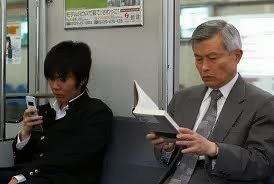 On the Crisis of Arts and Society: Steps Ahead
by Bill Banfield | special to NewBlackMan (in Exile)
On the Crisis of Arts and Society: Steps Ahead
by Bill Banfield | special to NewBlackMan (in Exile)“There is no political solution to our troubled evolution. Our so- called leaders speak with words they try to jail ya. They subjugate the meek, but it’s the rhetoric of failure. Where does the answer lie living from day to day? Is there something we can buy? There must be another way. We are sprits in the material world..."–The Police "...(music) social role as protest, resistance, musical energy, revolutionary aesthetic qualities...social history of rebellion, revolt, musical defiance to.. challenge, contest...co-opted, diluted, eviscerated commercialized forms...revolutionary music... not just for America, but for the planet...( a music in which) every major innovation…has been from musicians to attain greater and greater levels of expressive freedom through liberating the two basic fundamentals of music”—Fred Ho, our friend the revolutionary artist
We are all looking for ways to move forward and live productive lives in problem-some times. And there are things that many days need to be said. Our social consciousness has been thwarted though, and compromised as courage to speak meaning to power has been swamped for political correctness. Today, one of the driving reasons for our escalating social insensitivity, incivility, is because we ingest so many problematic images, messages, cultural practices in media, music and manufacturing processes focused on market demands, prescriptions to make money. This corrupts deeply.
As an artist I always say, we must resist.
We notice a frayed, disrupted Central Core Value system, that cannot sustain all the eruptions on the top soil.
My focus is much more narrow these days, on ideas, art that lifts, inspires, highlights our human capacity to think, live and make a better world. We think we need a new song to sing . The kind of song, or innovative art where ideas move people and change the world. As Margaret Mead, American anthropologist reminded us, "Never doubt that a small group of thoughtful committed citizens can change the world; indeed it’s the only thing that ever has." Today young people have even sharper minds and faster tools, and there are better examples for them, if they are led to chose smartly. If the music and art does not address the problems, the problems don't get sung about, and there are fewer notes that ring out to reach out to and from the people, if the music dies.
But the art can't only be about a fuss and a fight, it must include the positive forward. Let me take my old fart nostalgic " we had it better back in the day rose colored utopia dream bliss" glasses off, for a second and say, today in Hip Hop, to Kurt Cobain, to Bruno Mars and Adele, from today’s artists, writers, poets you can find the positive forward too.
We have to be good students of the culture we occupy, in order to realize, garner the lessons learned from that life observation. The details of our derail that dangle in view are impossible to miss, but the benefits of our study are immediate. Not keeping up with the Jones', but keeping them in view from all sides of the track provides anybody with an understanding of the worlds we live in and a measure of the tangible as we wrestle with these tangles. This question, what kind of world do we live in, what does the world (culture) value and how does one fit, permit and sit in, is essential.
Every generation has its rights and destiny to assemble its warriors, battle strategies, songs. But in that is always a prescription for its sustaining survival, not its end. What we've noticed, is the amount of certain core values, an appreciation of communal -connectivity, and artistic development has shifted, and the industry invests in and promotes a higher number of projects that focus more on empty commercialism and me- ism and mine, mine, more mine, and certainly less from the mind. We can see/ hear a definite shift from these central core values of meaning. Noone is saying the world has come to an end, nor that empty commercialism is a new problem. But we are certainly in a different mindset now in terms of what is uni- human defined.
There are two recent books that bring light to this cultural mash up we find ourselves in. I Got Schooled, by M. Night Shyamalan and Generation On A Tightrope by Arthur Levine and Diane R. Dean, are both books that focus on a new education, educational models forward, our cultural systems, provide insights into these shifts and address what could be the worldview of this current generation. Both agree, today's generation is uniquely wired differently, all puns intended.
We need a radical re-boot of our social-cultural aesthetic platform-program, if it is to be inclusive, connected to today's generation, artists, audiences, this society. We simply have to create another " through the wire hook up, " because our traditional lines won't connect.
All studies show that the number one event, enterprise that was meaningful and significant in the lives of this generation, is the establishment of the Worldwide Web, and electronic connectivity and social media. Which means most of the cultural codes, values and the means by which we obtained success, are of little significance to today's young people. Many of the things we like, wanted, got excited about can be gotten to through completely other means, or don't exist as primary anymore.
The shift is major modulation. For example, you can sense this in conversations around the ethics involved in preparation, or to aspire toward achievement. " Digital natives," may acquire things, ideas through a tribal social networking, sharing content and means to get at it. Here you notice a radical shift in the value of obtaining things, goals, from a more traditional " old school" orientation.
Original, individual thought, critical thinking has shifted to shared platforms, enhancing the speed to gather and the ease of access. The ethics that says you can achieve what you want because you have direct access has replaced an ethics that is prepared for appreciating the long haul and aspiring hard work to make it in the world, and not it being made for you.
These seem like very different rules. But how will the bridge be built that puts in play sustainable exchanges in the two worlds, and where shared cultural codes are possible? That is the challenge today, because the economic, generational, cultural gap has to be closed.
We can still participate and alter, effect the thinking and actions in the world, communities we live in, together. We've seen over the years many examples of pro- active creative work that changed people's lives. But that art, song, that creative dreamscape was beautiful, powerful and was compelling, contained meaning. It was well crafted. Today there is a change both in terms of the intentionality of things and the devastating reality and effect on young people.
All of us have seen our political landscape now poisoned my mistrust and venomous attacks, and we've seen media, movies, tv and popular culture plummet in terms of content, values and yet an escalation of irresponsible choices left for the public to scrape and sort through, and all for the love of money, greed, a need to get short lived attention, and pointless power. What's palatably apparent is the rise in this as common practice, and the rise in our adapting to it as acceptable and normative. I don't believe the real must become the reality.
It's clear we cannot live in a world and society that you can't talk about. You cannot talk about any change in that society without looking toward young people to be a part of that talk and change. But change means a real consideration of our realities and somehow talk, walk, change need to come together.
So, what can we do..?
1. Dialogue and share, create a committed discussion among us about powerful and positive ideas, music and cultural happenings, places that people are continually pushing ahead.
2. Mentor and model. Make sure we engage all the young people we can, and take 10 mi and talk, share with them a powerful positive idea. Give them as a conscious culture minded adult, another idea, worldview, view from " the good hood".
3. Be courageous and committed to, as the Essence magazine campaign was a few years ago, "take the music/ arts back," and speak up, call your local media, TV, and have communities demand sensitivity not censorship. Push for a broader mainstream ingesting of positive and powerful cultural images, stories, music and art.
We have to sing, step, talk, walk on the positive powerful downbeats again, and together be accountable for changing our society.
***
Bill Banfield is a composer, recording artist, musical director, scholar and the Professor in the Music and Societies program at the Berklee School of Music. He is the author of several books including the recent Representing Black Music Culture: Then, Now, and When Again? and the host of ACC with Bill Banfield.
Published on January 23, 2014 19:25
Stanley Nelson Talks New Film 'Freedom Summer' at Sundance
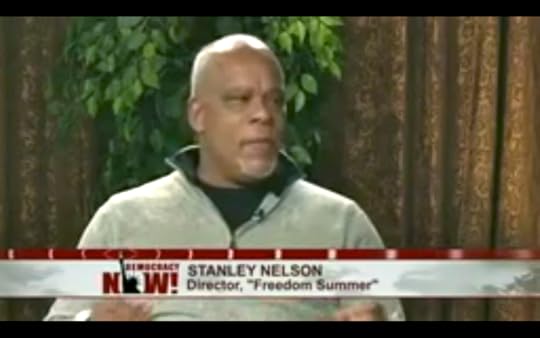 Democracy Now
Democracy Now
We are joined by Stanley Nelson, director of the new documentary, Freedom Summer. An Emmy Award-winning MacArthur Genius fellow, Nelson's past films include Freedom Riders and The Murder of Emmett Till.
Published on January 23, 2014 18:16
Preview: "Cutting Along the Color Line: Black Barbers and Barber Shops in America"
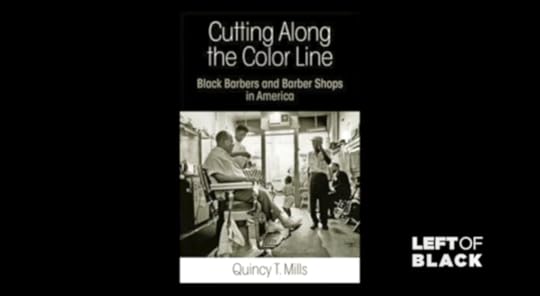 Left of Black @ The Root.com
Left of Black @ The Root.comLeft of Black host Mark Anthony Neal is joined by Professor Quincy T. Mills to discuss his book, Cutting Along the Color Line: Black Barbers and Barber Shops in America (University of Pennsylvania Press). Professor Mills teaches history at Vassar College.
Published on January 23, 2014 16:12
Pretty Sparkly Things: A Black Girl’s Encounter With The Prison Industrial Complex
 Pretty Sparkly Things: A Black Girl’s Encounter With The Prison Industrial Complex
by Tanisha C. FordI love clothes. I always have. As a black girl coming of age in the early 1990s, I was up on all the adornment trends: from asymmetrical haircuts and Cross Colours jeans to neckties and button down shirts (a la Boyz II Men). As any person who went to a predominantly black school knows, you had to come to school CLEAN! Even as twelve-year-old kids, style was our form of self-expression. It was our way of envisioning possibilities for our futures that could propel us beyond the de facto boundaries of our hyper-segregated neighborhoods. Dressing stylishly enabled us to imagine what it would be like to be doctors, ball players, lawyers, millionaire businesspersons, or entertainers. Because of our self-fashioned “fly code,” I was always looking for the next dope outfit to wear to school.
Pretty Sparkly Things: A Black Girl’s Encounter With The Prison Industrial Complex
by Tanisha C. FordI love clothes. I always have. As a black girl coming of age in the early 1990s, I was up on all the adornment trends: from asymmetrical haircuts and Cross Colours jeans to neckties and button down shirts (a la Boyz II Men). As any person who went to a predominantly black school knows, you had to come to school CLEAN! Even as twelve-year-old kids, style was our form of self-expression. It was our way of envisioning possibilities for our futures that could propel us beyond the de facto boundaries of our hyper-segregated neighborhoods. Dressing stylishly enabled us to imagine what it would be like to be doctors, ball players, lawyers, millionaire businesspersons, or entertainers. Because of our self-fashioned “fly code,” I was always looking for the next dope outfit to wear to school. One day, my stylish Mother came home with a white denim short set that she’d bought for me. The shorts and matching top had these multicolored, beaded tassels—“pretty sparkly things”—dangling from them. I paired the outfit with a hot pink hat (like the ones Mayum Bialik used to wear on the T.V. show “Blossom”). I borrowed my mother’s hot glue gun (this was pre-Bedazzlers), and I glued rhinestones on a pair of my ballet flats. That next week, I strutted through my junior high school’s halls in my new fashion ensemble. I was the Hip Hop Coco Chanel, and this outfit was my masterpiece! It quickly became my signature look that I reserved for special occasions.
So naturally, when my Father told me we were going to visit my older brother who was serving time in prison, I knew exactly what I was going to wear: my outfit with the pretty sparkly things! I wanted my big brother, who was eight years my senior, to be proud of the young woman I was becoming while he was away. And, to me, this outfit symbolized not only my sartorial innovation but also my maturity and professional promise.
I had never been to a prison before. I was terrified. But, I put aside my fears so I could visit my hero. After riding in the car for what seemed like forever, we pulled into the prison’s visitor parking area. My heart began to pound; I could feel moisture forming on my palms. I wondered: “Would my brother recognize me? What was his life like in prison? Was it like the film South Central? Was my Brother like O.G. Bobby Johnson? If I go in, will they force me to stay…forever?!” All of these thoughts whizzed through my twelve-year-old brain as we approached the facility. The one thought that did not occur to me was that I might not be able to get into the prison because of what I chose to wear that day.
Another visitor informed my Father that the guards might not let me in because my pretty sparkly things violated the visitors’ dress code. I was crushed. The very outfit that I’d picked out to impress my big Brother with might be the very thing that kept me from even seeing him. My outfit was an affront to the prison industrial complex. And, the prison system responded by attempting to stifle and confine my creativity—reflected in the pretty sparkly things on my garment—the same way it had those of the millions of men and women held captive behind its bars. Tears welled in my eyes. I felt guilty that after driving nearly two hours to the prison, my Dad would not even get to see his son. I felt like I had wasted his gas and his time simply because I had to wear this outfit.
My father and the other adults began brainstorming as to what could be done about my clothes: perhaps they could give me someone else’s t-shirt to wear so that only the pretty sparkly things on my shorts would show. Maybe someone could wait in the car with me while my Father went inside…“So much fuss over a few pretty. sparkly. things.” I thought. Finally, the prison authorities decided I could go in. I could keep on my outfit, and I could go into the prison. We got to see my Brother, who put on a happy face for us despite the fact that he was likely ashamed that we had to visit him under such circumstances. I hugged him, and beamed with pride (though a little less brightly) as I showed off my outfit. I left the prison knowing that something in me had changed; I had lost a bit of my innocence that day. I had been exposed to a type of cruelty that I could not articulate at the time. I never visited my brother again. And, once he was released, we never discussed his stint in prison.
I recently shared my story with activist Lois Ahrens, who runs the Real Cost of Prisons Project, based in Northampton, Massachusetts, and she helped me put my personal experience into a broader context. I asked her, “Why did this happen? Why are guards so worried about what people wear?” Ahrens said:
Guards have power and prisoners and visitors have none. Everything a guard does reminds a prisoner or visitor of that dynamic… We are all presumed guilty because we are visiting someone who has been found guilty… Every visitor is suspect therefore whatever a visitor does or wears is suspect.
She then gave me a list of clothing and adornment items that have been banned from Massachusetts’ prisons:
Tassels Cargo pants Open-toed shoesBobby pinsBarrettesEarringsSleeveless shirts Underwire bras Zip-front shirts Shorts Clothing w/ many pockets Baggy or tight clothingHoodies Revealing or sheer clothing Bodysuits of any typeWrap around shirts
This list represents the literal policing of people’s dressed bodies. The guards have the sole discretion to enforce these dress codes, and the list of banned garments varies from state to state. If you challenge a guard’s decision about your clothing, you could lose your visitation privileges for a year or more. These adornment regulations are part of a larger, problematic set of visitor body politics. Loved ones are subject to intrusive body searches, which can include: scanning; wanding; removing shoes, outer shirts, and belts; looking under your collar; examining your hair and mouth; and having search dogs sniff you. This process is only slightly less invasive than the full-body searches the prisoners are subjected to before they enter the visiting area.
The reality is that most people, like my family, do not know the rules regarding “proper” attire while visiting prisons. Nor are most people trying to sneak contraband to prisoners in their garments. Ironically, it is often the guards who operate smuggling rings (see here and here). Most people are simply trying to visit their loved ones, trying to make their family members feel their love through the prison’s Plexiglas windows. During our conversation, Ahrens noted the paradox between prisons’ treatment of loved ones and their stated views about the importance of family visits. She told me, “Every state claims it values ‘family reunification,’ yet every state makes visiting as degrading as can be imagined.” Ahrens is currently engaged in a battle with the Massachusetts Department of Corrections (DOC), pushing the DOC to change its policy regarding using search dogs during the visitor screening process.
But, what the fight for the humane treatment of prison visitors needs most is people willing to share their stories. Ahrens states, “Visiting a prison or a jail is traumatizing for everyone, which is why it is so important to do it and good to talk about it since there is so much stigma and shame with having a loved one in prison...which helps keep [the structure of power] in place.”
I’d pushed my traumatic visit to the prison into the recesses of my memory, until I started organizing this mass incarceration forum. At twelve years old, I did not have the language with which to articulate my trauma or to push back against the system. But, now I understand the power in speaking out about these issues. Incarcerated folks—regardless of whether they are innocent or guilty of the charges for which they have been convicted—belong to someone. They are loved. And, their loved ones deserve to be treated humanely when they visit. This essay was very difficult to write because this experience was so personal, and family dynamics can be hard to discuss in an open forum. But, it is important to illuminate how mass incarceration affects families. We are invisible victims of the prison system. I hope my story compels others to share their experiences and join in the fight against the prison industrial complex.
*This piece is written in loving memory of my big Brother who died tragically on December 16, 2012.
***
Tanisha C. Ford is an assistant professor of Women, Gender, Sexuality Studies at the University of Massachusetts Amherst. She is completing a book entitled Liberated Threads: Black Women and the Politics of Adornment. Follow her on Twitter: @SoulistaPhD
Published on January 23, 2014 15:43
Richard Sherman: Can Alternative Worldviews Prevail?
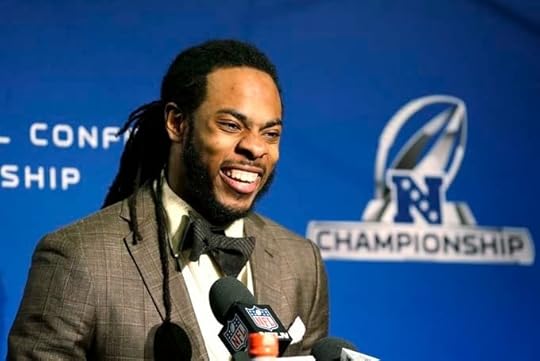 Richard Sherman: Can Alternative Worldviews Prevail?
by Thabiti Lewis | special to NewBlackMan (in Exile)
Richard Sherman: Can Alternative Worldviews Prevail?
by Thabiti Lewis | special to NewBlackMan (in Exile)The frenzied media responses to Richard Sherman and the Richard Sherman’s of the world inspired me to write Ballers of the New School: Race and Sports in America (Third World Press, 2010). The response to Sherman’s post-game comments (not tirade, which is a long angry speech of accusations) is a complex issue involving multiple facets that need to be teased out regarding issues of cultural hegemony, truth about the NFL, and, unfortunately race.
The most glaring issue is that people were unprepared to see the adrenaline that accompanies sports performances on the highest level. Anyone who has participated in an intense sport like football knows that the energy Sherman displayed immediately following a game his team won on the last play (because of his play against a player who had “dissed” him and an ex-college coach who also “dissed” him by passing on drafting him) was a high adrenaline moment for Mr. Sherman.
When a fifth round draft pick that rises to All-Pro, is touted as one the best corners in the game, and makes the game-saving play has the mic he might feel justified in reminding the world that it was wrong about him. The NFL is marketed as harmless fun. What fans see and hear are edited, pre-scripted expressions. But the truth is that football is a very violent game where people get hurt often and suffer debilitating injuries.
Another tangled issue is that we live in a sound bite culture where far too many who call themselves journalists or reporters lack the depth, intelligence, or creativity to come up with really interesting stories. However what may never quite get untangled but at least needs a comb put to it is the social and racial hegemonic discourse that dictates what is right and who gets to decides what is wrong or right.
In other words, Sherman's vilification is not unrelated to the fact that he is a victim of a culture that creates contrasts and otherness in the bodies of black men—even when they hold heroic status. Thus, if you study the comments about his post-game exchange with Erin Andrews, you will hear that some of the outrage or fear stems from the belief that she was a little afraid or threatened (which she says she was not).
Where I am from the guys on sidelines know their place. They only get to comment so much, and they do not get to dictate the culture of how and what those performing and acting should or should not do.
Equally problematic is the media spin of Pete Carroll as “father” to his misguided son. I am certain Sherman respects and looks up to Carroll who is his elder but the racial dynamics of narrative is tired and worn out. Moreover, I am suspect of Carroll as role model given his USC history. Thus he is perhaps not in the position offer the best advice, except about how to escape cleanly from a bad mess (come to think of it, perhaps he should listen to Carroll). As Sherman has demonstrated repeatedly from the whipping he gave Skip Bayless last spring on “First Take” to the many composed thoughtful interviews he has conducted, he is smart enough to speak for himself—and he has done so countless times since Sunday’s “incident”. We undoubtedly live in a world of double standards for black athletes.
So rather than try to speak for Sherman I will speak to the racialized hegemonic discourse that gives life to double standards and is allowed to label Sherman a thug, inappropriate, ungracious, and classless. Indeed, I will speak truth to the parameters of a worldview that is culturally framed by a primarily white and male sports media (about 85-90% white and male if memory serves me correctly). To shift the worldview away from these individuals allows us to see Sherman’s post-game comments in a different light. Not as a tirade, but more of a “setting the record straight” session.
You see, where I am from if you “put up” (win) you can say what you want—but you have to win. To paraphrase Tom Brady conceded that if you don’t like a guy talking smack when he wins—beat him to shut him up. If you lose you must endure him talking smack. Perhaps more members of the media-- producers and directors of sports shows—need to spend more time “around” players to learn the rules of the game.
Where I am from we question and become suspect of those raising a big fuss about Sherman’s behavior as odd, strange, or unacceptable according to proper “standards”. We ask what these people are they trying to control and protect? Let me shift into academic gear for a second as I make one thing clear: there is a symbiotic relationship between hegemony and ideology. This is at the core of the Sherman debates. Therefore the prevailing questions remain: (1) Who constructs the parameters in which young black men expressing themselves in sport culture is often conceptualized as negative? (2) Why is this often the case? (3) Who controls the narratives that define cultural productions such as Sherman’s post-game comments? (4) Who decided what THE right or ONLY valid worldview is?
But also where I am from young brothers like Sherman know better than to forget to shift out of “game mode” for a media interview. They are taught to know that such enthusiasm can and often will be used negatively against you despite countless displays of composure and intellect—even if you graduate with honors from Stanford. They know this because where I am from we acknowledge the unfortunate racist nature of our society.
As I spent a good portion of Ballers of the New School explaining, those in control of sports narratives can, and unfortunately too often do, take comments or demeanor out of context to create villains of people of color and further stoke the flames of racial tensions and divisions. But in all fairness to Sherman, he did not have time to switch into the same interview demeanor he displayed in his CNN interview a few days later. To be fair, Andrews pulled for an interview moments after making one of the biggest plays of his short career and the world got a glimpse of the mode nearly all players are in during the heat of battle.
However, I am most troubled by what is not being written about Mr. Sherman. His story is inspirational. I just finished reading Malcolm Gladwell’s “David and Goliath” and it struck me that the real story is one of how Sherman, an underdog, has gone toe-to-toe with NFL convention that said he was no better than a fifth round back-up defensive back and he has proved them all wrong. He trumped the experts—the Goliaths! For me, Sherman's story is a true American drama of how a kid from South Central Los Angeles without the academic resources that many of his peers had prior to coming to Stanford excelled at Stanford, an elite university.
Why not praise the underdog who turned disadvantages (not rich, suffered injury that compelled him to switch to from receiver to cornerback near end of college career) was turned into an advantage because they deepened his resolve. Or, we could talk about how he has put his Stanford Communications degree to good use by maximizing every opportunity to make the world stand up, notice, and discuss him. Why are we not hearing the amazing story of how a kid who led his college team in receptions changed positions and became a stand-out defensive back in college, survived being drafted in the fifth round, then worked his way into the starting line-up, earned All-Pro status, and is now considered one of the very best defensive backs in football!
Some smart journalist might consider writing a comparative story about how like Peyton Manning who was written off because of his neck injury Richard Sherman has also overcome injury and the odds, proving the critics wrong. Where is the story about how hard Sherman studies his opponents? Or that it will be interesting to see how Sherman matches wits with Manning? Will Manning be Sherman’s next victim or will Manning finally put Sherman in his place? Hmm…now those are topics worth talking about. And if those topics are too daunting for the more daft members of the media they can always lean on the fact that America loves an underdog—right? Richard is a “David” if I ever saw one.
***
Thabiti Lewis, Visiting Scholar, Center for the Humanities at Washington University in St. Louis and the author of Ballers of the New School: Race and Sports in America (Third World Press).
Published on January 23, 2014 14:48
A Remix From the Archive of the TNI-Mixtape: for Richard Sherman
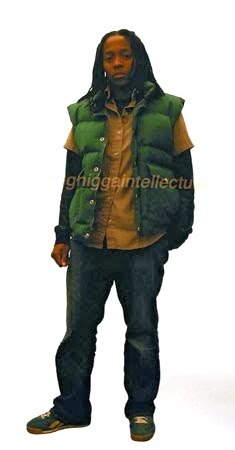 courtesy Ayanah Moor"This seems like it's the accepted way of calling somebody the n-word nowadays. It's like everybody else says the n-word, and then they say thug, and, 'Oh, that's fine,'" -- Richard Sherman
courtesy Ayanah Moor"This seems like it's the accepted way of calling somebody the n-word nowadays. It's like everybody else says the n-word, and then they say thug, and, 'Oh, that's fine,'" -- Richard ShermanA Remix From the Archive of the TNI-Mixtape: for Richard Shermanby Mark Anthony ‘thugniggaintellectual’ Neal | NewBlackMan (in Exile)
More than a decade ago, as part of a generational cohort of young Black men who entered the Academy, who were literally raised on the beats and rhymes of Hip-Hop, I have began to think of myself as a “ThugNiggaIntellectual.”
Though I don't claim to have ever been a thug and have never accepted the status of a "nigger," the distinct New York styled Black masculinity that I wear means I have known thugs and a bunch of "niggers." I share a space with them each time I'm profiled in grocery stores, or chillin' with my homies Gramsci and Jay Z at Starbucks. Folks are seemingly fearful, confused and disgusted, as if a "nigga" ain't supposed to drink some expensive coffee and have a laptop.
But it's the latter part of that term "Thug…Nigga...intellectual" that perhaps raises the most eyebrows—“You're an intellectual?” recalling the voice on KRS-One’s “My Philosophy”
In a society that seemingly doesn't have the language to adequately describe the value of living the life of the mind, there certainly isn't much language to explain the value of a "nigga" like me reading and writing about organic intellectuals, the transnational import of entrepreneurial Gramscian thugs (most folks just wanna call them gangsta rappers), and the role of social media in our political lives, while listening to 2 Chainz’ “Feds is Watching” and Gregory Porter’s “On My Way to Harlem” and sipping on an Chai latte at three o'clock in the afternoon.
Meanwhile, more presumably worthwhile "niggers" are driving buses, bussing tables, and busting rocks somewhere up state. All I got to do is walk in the door, and given the looks and stares and grunts and of course the stupid questions ("are you a DJ?"), I might as well had been thugged-out with a 9mm in one hand and the 40oz in the other. So why complicate all of this by actually referring to myself as a "ThugNiggaIntellectual?" Because, like Posdonous said a decade ago, I'm damn complicated.
The figure of the "Thug Nigga" racializes the cuddly, user friendly thugs that have been popularized in American culture, whether in the form of the hard-boiled detectives found in the dime-store novels of a half-century ago, leather-jacket clad cartoons like Henry Winkler's "Arthur Fonzerelli" ("Fonzie") on Happy Days and Sylvester Stallone's "Rocky Balboa," or stylishly cerebral thugs like the late James Gandolfini's "Tony Soprano."
When all is said and done, the "Thug Nigga" is a dangerous "nigger" and America has never romanticized about its fear of angry "don't give a f*ck niggers" (see the Prison Industrial Complex).
Many young Black men choose to embrace this notion of "thug-niggerdom" as a way to gain power and visibility in a society that has had designs on them from birth to use them to fill the scrap heaps of social obscurity. And it's all image. Real thugs and gangstas don't perform in music videos or on subway rides to Brooklyn.
But the image of the "Thug Nigga," given the general demonization of Black men in American society, strikes a certain chord of fear in the places where Black men are neither expected to be visible or be heard. Richard Sherman is just the latest reminder.
***
An earlier version originally published at Popnatters.com (2003)
Published on January 23, 2014 09:56
Trailer: 'The Mask You Live In'--on American Masculinity
 The Representation Project
The Representation ProjectCompared to girls, research shows that boys in the U.S. are more likely to be diagnosed with a behavior disorder, prescribed stimulant medications, fail out of school, binge drink, commit a violent crime, and/or take their own lives. The Mask You Live In asks: As a society, how are we failing our boys?
From the team behind Miss Representation. Coming in 2014, an exploration of American masculinity.
Published on January 23, 2014 07:29
Mark Anthony Neal's Blog
- Mark Anthony Neal's profile
- 30 followers
Mark Anthony Neal isn't a Goodreads Author
(yet),
but they
do have a blog,
so here are some recent posts imported from
their feed.




